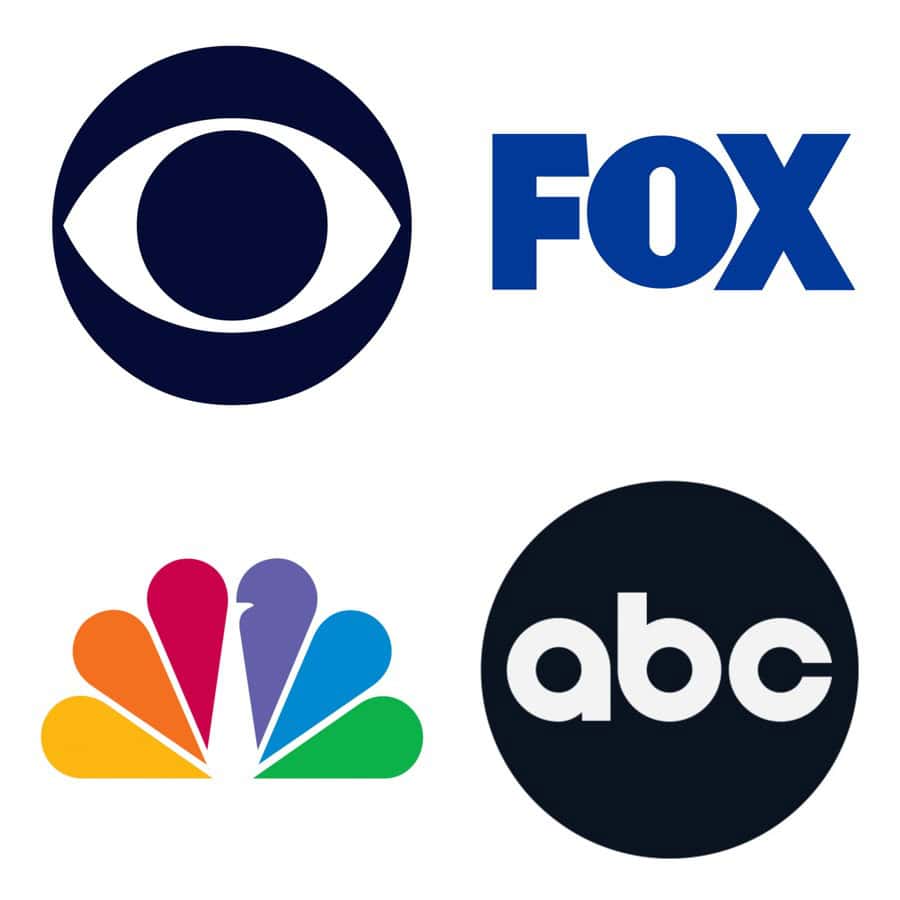
Local channels have been shaping America’s media landscape since TV’s golden age. While it may seem like times have changed with the dawn of the streaming era, the differences may not be as big as you think. It’s easy to watch big-budget films and series on platforms like Netflix and Hulu, but did you know you can get local television in the same way? Skinny bundle streaming services allow you to add live TV channels to your subscription, including options for local cable networks. You’d be surprised how many services offer local content among their channel options.
Not only can you use platforms with a live TV streaming model to catch local programming, but you can also still get local stations the same way American households have for generations — over the air. It’s easy to forget that over-the-air options are still available to anyone with an antenna, but these services have never gone away. So, there’s no reason to turn to overpriced and restrictive cable and satellite companies for local TV. This complete guide will help you watch local channels without a cable subscription.
How to Watch Local Channels Online and Over the Air Without Cable
Local television stations serve communities with coverage that’s important to them, like local news, weather reports, traffic updates, sports, educational programs, local arts and culture, and more. They provide public services by announcing amber alerts, school closings, severe weather warnings and breaking news, and are a great way to keep up-to-date with what’s going on in your region. There are two main ways to get your local channels without a traditional TV provider.
“Skinny bundle” streaming services, such as Hulu + Live TV or fuboTV, offer an on-demand library as well as live channels. When you sign up, you can customize your subscription by selecting cable channels to add, allowing you to ditch networks you don’t watch. You’re charged based on the number of channels you choose, so you can avoid unnecessary extras and save money while still getting your favorite programs. Local channels, including ABC, CBS, FOX, and NBC affiliates, are frequently found as part of these slimmed-down services. Availability of local network feeds will vary by region, but you can easily check out the selection by heading to the streaming service of your choice and viewing its channel list.
The other way to watch local channels is to invest in a quality TV antenna. Local channels are broadcast through local TV towers across the country, and with the right equipment, you can tune in for free. Distance from your local tower and obstructions can make a difference in channel availability and clarity of signal, but it’s still a great low-cost way to watch TV. We’ve got a full guide on the basics of how to set up free over-the-air TV, as well as how to choose an HD TV antenna.
Here is the full list of all the ways to watch local channels:
Can I Watch Local Channels on Roku, Fire TV, Apple TV, or Chromecast?
You can watch your local channels on any screen you want, from your main-screen TV to your phone, by connecting a skinny bundle streaming service. Devices compatible with the streaming services above include Roku, Fire TV, Apple TV, Chromecast, iOS, Android, and your web browser. If you watch over the air, streaming devices aren’t an option.
If you’re looking for information on how to set up local TV on your chosen streaming device, check out our device-specific guides:
More to Love for Local Channels Fans
Many viewers turn to local channels for relevant news coverage, but there are other networks that can help you stay informed. NBC is another great source of daily news, offering prime-time news segments in the morning and evening. Check out our guide on how to watch “NBC Nightly News” without cable.
CBS is one of the “Big Four” oldest and most successful networks on TV. The Big Four usually have local affiliate stations across the country. CBS is home to shows like “NCIS” and “Survivor,” as well as “CBS Evening News.” Find out how to watch CBS on our blog.
Another Big Four Network is ABC, which has programming from “ABC World News Tonight” to shows like “Grey’s Anatomy” and “Bachelor in Paradise.” Check out our guide on how to watch ABC without a cable subscription.
If you mainly watch local TV for the sports, try ESPN. It’s the biggest giant in sports programming, airing regular coverage of basketball, baseball, football, and hockey. Check out our guide on how to watch ESPN without cable.





Help. We cut our $155 DirecTV TV bill with a ClearStream 4MAX extreme range outdoor HD antenna. We installed, connected, scanned, but when we go to watch the signal breaks up after about 10 minutes and we get a message that says “weak or no signal go to broadcast and scan signals.” I hoped we would hold a signal better than that. What am I doing wrong?
Hi Sandi,
We have a piece that could be useful in your situation: How to Get Clear TV Antenna Reception: Essential Tips and Troubleshooting Techniques.
You need to find the direction of where the signals are broadcast from. You’re dealing with towers not satellite. Here’s how it works. When you have a reciever dish for satellite the station sends the signal to a dish to satellite, the satellite has transponders it chose the strongest signal and redirects that to your dish reciever that signal goes to you’re box the box differentiates as the signal may be strong or weak so in modern boxes they auto adjust. On a cellphone the signal goes to a tower the tower to the satellite then to a tower then to your cellphone. If the phone notes a weak signal the phone Powers up a stronger signal. In you’re situation you dealing with obstacles as towers don’t release or emit a straight signal. I emits a circular wave pattern like a pebble in a smooth pond. Any obstacles prohibit the signal from being recieved fully and distance, mountains,buildings,trees and bad weather will interfere. If your using a digital reciever your issues will be as above AND auto traffic with digital handsfree phone systems, aircraft, weather, smartphones and or anything running close to you’re reciever. You need to place the device to the highest location in you’re home and with no obstacles like in a window on the side of the home where the towers are located. Example, in Vineland N.J. you have cities northwest, northeast, and Southwest. Now you antennae will only pickup a good signal from about 40 to 65 miles. So pick the closest large city and direct your antennae there. Your major cities run repeaters and boosters so you should pick up your major and a few minor stations. To avoid all of the above, which I felt by explaining it would better assist you in knowing how electronics function and to what capacity . Go to an electronics store purchase a signal booster that will boost and filter your channels and that should take care of you’re situation. What I do is I’m on unlimited data on my cell, I can tether or go WiFi, so then I go to my computer accept the wifi change it to mobile hotspot 146 miles away and watch all the tv I want in HD. That way for 70.00 a month I have hundreds of channels and music, unlimited calls, text and data . I’m located in a valley, my regular towers are Northwest, and everything affects it. Oh, and the computer I use is 14 years old, and I have to run a cable to the largescreen monitor but hey, I get better TV and more tv in HD than all of my neighbors who pawn their hubcaps to pay for direct TV, plus I don’t get blocked out on any sports .
Very good! I wish I was as smart as you , idk how to tether and have too many people in the house using TVs anyways like 5 . Thinking about Roku but I’m not sure how to stream channels?
Where is the reference to LOCAST. It replaces ugly outdoor antennas which do not work well in the Pacific Nortwest, in addition to indoor antennas which do not work either.
Local tv stations should be happy with LOCAST as it improves picture quality including advertising.
no locast in seattle :c
There is now.
Not in Minneapolis. How about now?
How do we find out if the channels we want will work? Such as Foxnews live?
Am I correct in thinking I still need “internet” to stream anything mentioned here?
To stream on any of the streaming services listed, yes, you’ll need internet — but you don’t need internet to use an antenna!
I am finding antenna does not work where i live it goes in and out plus some antennas did not pick up anything, i am on the second floor of 3 floors bldg facing straight north, i am trying to find something that i can mostly only get network channels on my TV without paying high cable bills, i have internet and phone both on cable company but want to get rid of cable and get only network channels without antenna which does not work here. Any suggestions ?
I always want to be updated with local news but I’m barely home to check it out on television. I never knew that skinny bundles are streaming solutions that are almost the same with cable and satellite subscriptions except for the monthly bill. This seems interesting, but I also opt to find a website where it possible to watch local news videos. https://inewz.tv/
UStvnow.com has five free channels. ABC, CBS, CW, PBS, and MyTv. They also have other packages that includes recording
These are all free, the bigger packages have recording available for a price
Do any people get local channels with a Rabbit Ears Antenna, and then just pay for the rest of the services they want to stream live?
This is a great way to do it!
I think what most people don’t understand, is the frequencies being broadcast don’t travel well over hills or mountains. So if you do receive a signal your smart tv will let you know just how strong that signal is. Also antennas are very directional so ideally they need to be motorized to pickup strong or weak signals.
Simply Search local tv stations for any area, then, go to their website and watch the live feed. Simple and no app or subscription needed.
For those of you recommending locast, I just went to their site and the site denied me because I wanted to watch out of area TV stations. I live in wa but want to watch MI tv because I am moving there soon. LOCAST = NOCAST.
Change your tv setting to mi..turn of tv..restart locast and set to mi..should resolve the problem.
Such good Information.
Change your T.V setting to MI..turn of T.V..restart locast and set to mi..should resolve the problem.